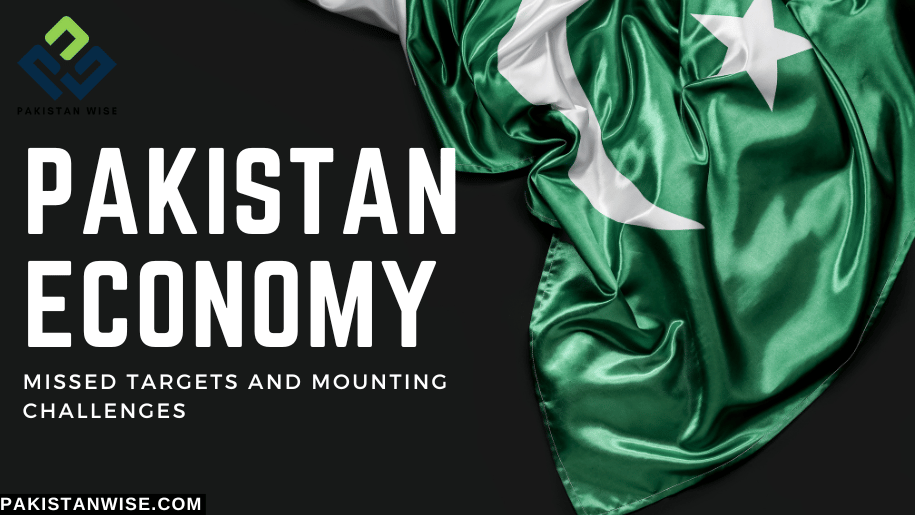Pakistan’s Economy in Crisis: Missed Targets and Mounting Challenges
Pakistan’s economy has weathered a tumultuous year, plagued by missed targets and numerous challenges. As the Finance Minister recently unveiled the economic survey, the grim reality emerged—Pakistan’s growth fell far short of expectations. With a feeble 0.29% GDP growth, the industrial sector even witnessed a contraction of around 3%.
Services and agriculture sectors also missed their targets by substantial margins. Factors such as floods, international supply shocks, currency depreciation, and import restrictions to safeguard foreign exchange reserves have collectively contributed to these abysmal growth figures. Moreover, inflation has soared to unprecedented levels, hindering economic stability.
This article delves into the economic setbacks faced by Pakistan, analyzes the repercussions of deficit contraction, explores the impact on industries and employment, and discusses the government’s future course of action to revive the economy.
I. The Inflation Quagmire
Inflation has been an enduring challenge for Pakistan, wreaking havoc on the economy and its people. Month after month, inflation records have shattered previous highs, with Pakistan experiencing the highest inflation rate in decades.
The economic survey documents reveal that the government projected an alarming inflation rate of 29% for the first nine to ten months of the year. This unprecedented surge in prices has placed an immense burden on the citizens, making it increasingly difficult for them to afford basic necessities.
The ripple effects of high inflation extend beyond individual households, permeating various sectors and posing a significant obstacle to economic growth.
II. Tax Collection Woes
Another area where the government’s performance fell short of expectations is tax collection. Despite setting a target of 6.4 trillion rupees, the government only managed to collect around 5.6 trillion rupees in taxes. This significant shortfall raises concerns about the effectiveness of tax policies and the government’s ability to generate sufficient revenue.
Insufficient tax collection not only strains the fiscal position but also limits the government’s capacity to invest in essential sectors and provide public services. Bridging this tax revenue gap will be crucial for stabilizing the economy and funding developmental initiatives.
III. Contraction of Deficits: An Illusory Achievement
The government highlights the contraction of deficits, particularly the trade deficit and current account deficit, as an achievement. However, this supposed success comes at a steep cost. By curbing imports to safeguard foreign exchange reserves, the government managed to reduce the trade deficit and current account deficit.
Nevertheless, this strategy has severely impeded economic growth and jeopardized various industries. To illustrate, several prominent auto manufacturers, including Honda and Suzuki, were compelled to shut down their plants due to the inability to import critical components.
Consequently, the decline in deficits has come at the expense of unemployment and a detrimental three percent contraction in the industrial sector. It is essential to recognize that achieving economic stability should not be pursued at the cost of stifling industries and exacerbating unemployment.
Related Article: Pakistan’s Mobile Industry: Local Manufacturing Initiative
IV. The Road Ahead: Macroeconomic Stability
While the past year has undeniably been challenging for Pakistan’s economy, the Finance Minister assures that macroeconomic stability is now the government’s utmost priority.
However, whether the current administration can deliver on this promise within the next few months, leading up to the forthcoming elections, remains uncertain. The government must establish a clear and comprehensive roadmap for economic recovery and growth.
It will require a concerted effort to address underlying issues, such as weak governance, structural impediments, and the need for institutional reforms. Moreover, engaging with international financial institutions, such as the International Monetary Fund (IMF), may be necessary to secure vital financial assistance and support.
Related Article: Pakistan Received $150 Billion in Remittances in Five Years
Conclusion
Pakistan’s economy has grappled with a challenging year, marked by missed growth targets, surging inflation, and tax collection shortfalls. The government’s strategy of shrinking deficits has come at the expense of industries and employment, highlighting the need for a more balanced approach.
Moving forward, it is imperative for the government to prioritize macroeconomic stability while addressing structural issues and fostering an environment conducive to sustainable growth.
The forthcoming elections will test the government’s commitment to implementing robust economic policies, while the subsequent administration will face the arduous task of making tough decisions and engaging with international partners for a path to recovery.
Only through comprehensive reforms and diligent efforts can Pakistan overcome its economic woes and chart a trajectory toward long-term prosperity.

